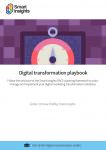Our review showing examples of the latest innovations in digital media, technology, and data to support digital transformation
We love reviewing innovation in marketing. It’s interesting to see ‘what’s hot’ and ‘what’s cool’, but to keep it practical and actionable as we like, we’re equally interested in which communications and transformation techniques will make the biggest commercial improvement for businesses.
A good example of the commercial impact digital technology and media can have is Dominos. I recently heard about the impact of digitization of Dominos from Dave Wild, their UK CEO at Technology for Marketing / E-commerce Expo. Dominos UK only took its first mobile phone order in 2010 when online sales accounted for less than 30% of revenue. Eight years on, Dominos have a market share of more than 50% with digital transactions accounts for more than 80% of sales and the UK smartphone app accounting for more than two-thirds of those sales.
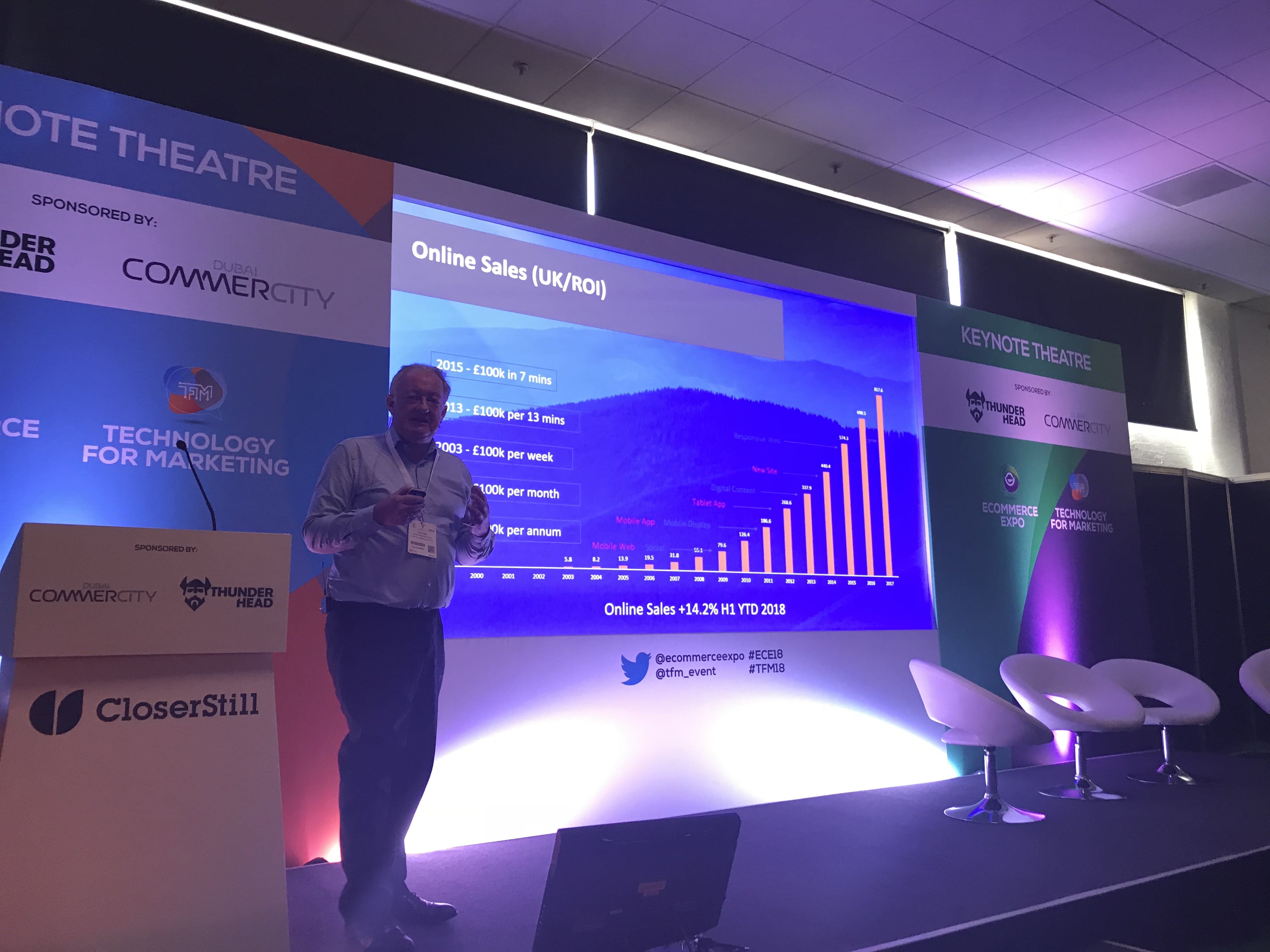
In this review of digital innovation, I’ll take a look at examples of the latest marketing techniques leading companies are deploying which are likely to be adopted as trends across businesses next year.
To structure my review I will look at these new techniques and technologies across these 8 key digital marketing communications techniques which form the digital channel essentials toolkits used to structure our planning templates in our members’ area.

But first, a question for you – Which marketing trends will be most important to you and your business in the year ahead?
It’s been really interesting to ask this question on our blog over the last few years to see what the most significant trends are ‘across the board’ and how these vary through time.
So, do let us know, we’re just looking for what will matter most, so…
“Please give the digital marketing technique which you hope will give the biggest commercial uplift in 2019.”
Thanks in advance for sharing your views!
[polldaddy poll=”10124704″]
(If you can’t see the poll, you can vote directly and see the results here)
I’ll now take a look at the different types of marketing trends grouped by the main techniques in our multicolour sunflower.
1. Digital marketing strategy and planning trends
A key trend in overall digital strategy development is the ongoing popularity of digital transformation programmes. A recent poll on a members’ webinar in digital transformation showed that a third of businesses are planning transformation within the next 12 months with a quarter already having embarked on them. This is similar to what we’ve seen in our more general surveys.

Within digital marketing strategy, there is continued interest in developing integrated digital marketing strategies across multiple channels. Digital transformation programmes are a response to the challenges of digital silos in some companies where there has been a failure to integrate digital across a company. Instead, we recommend using a customer-centered approach to audit your approach for different personas across the lifecycle as shown below.
In today’s omnichannel marketing world there are many marketing techniques across paid, owned and earned media that we advise reviewing across the customer lifecycle.
From digital marketing to multichannel to omnichannel marketing
This visual highlights a broader trend in marketing, which is the wider use of ‘omnichannel communications’ centered around the customer to describe marketing strategies outside the retail and travel sector where the omnichannel term originated.
If you’re wondering ‘why omnichannel’, Omni, based on the Latin Omnis meaning ‘all, every, the whole, of every kind’ emphasizes the importance of seeking to reach and interact with customers across touchpoints in all channels. It shows a more forensic approach to reaching target audiences, but should recognize that budget needs to be prioritized for the most effective channels.
This quote from John Bowden, Senior VP of Customer Care at Time Warner Cable explains how omnichannel strategies are more customer-centric.
“Multichannel is an operational view – how you allow the customer to complete transactions in each channel.
Omnichannel, however, is viewing the experience through the eyes of your customer, orchestrating the customer experience across all channels so that it is seamless, integrated, and consistent.
Omnichannel anticipates that customers may start in one channel and move to another as they progress to a resolution. Making these complex ‘hand-offs’ between channels must be fluid for the customer. Simply put, omni-channel is multi-channel done right!”
2. Marketing strategy and planning
Ultimately, it is the business, marketing, and brand development strategies which drive the growth of a business, so it is important to have a sound marketing strategy and branding in place before working on the digital tactics. Otherwise, it’s likely your hard work on the digital tactics will be wasted if they are directed at the wrong audience and your value proposition isn’t strong enough.
The key trend here is the way digital technologies and media offer the opportunities for digital disruption. Yet digital marketing is not always used as a disruptor. As I discuss in my Digital Marketing: Strategy, Implementation and Practice book, digital marketing is more often used for market penetration than new product or market development (these are the classic Ansoff growth strategies). To give you a benchmark, this new CMO Survey research from Duke University Fuqua Business School, Deloitte and the American Marketing Association based on the views of Chief Marketing Officers (CMOs) in large US organizations is useful. It’s interesting since it translates the theory of Ansoff into practice, showing how businesses are mainly investing, but other strategies are significant.
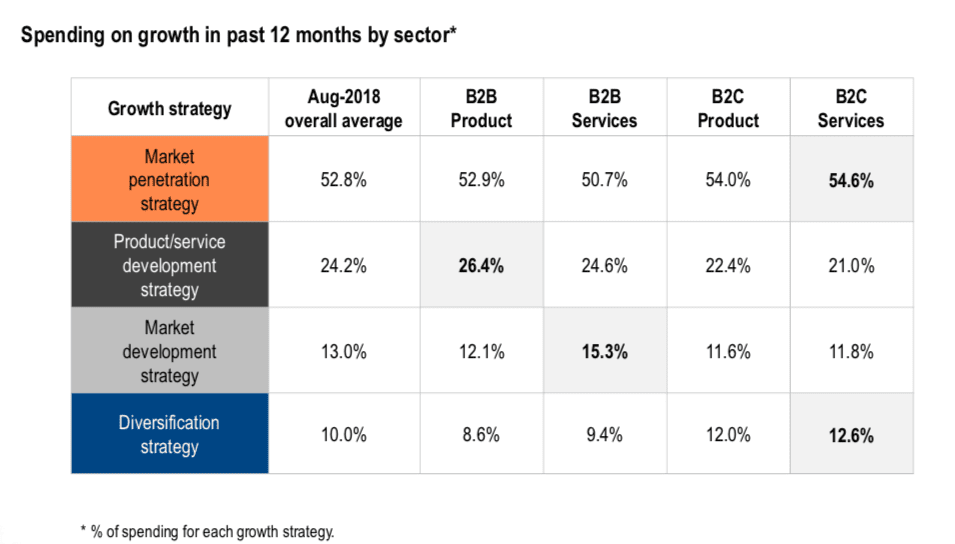
Digital experiences
Creating mobile responsive website designs for the dominant use of smartphones is now old news. We see future innovation in digital experience in the areas of speed and personalization and conversational user interfaces based on improved insight. I’ll illustrate this with a couple of examples.
Google has long proclaimed the importance of download speed and despite the widespread use of RWD, performance Google’s benchmarks shows that many businesses are falling short of the required speeds.
Using technologies like Accelerated Mobile Pages (AMPs) and Progressive Web Apps (PWAs) which we introduced in last years webinar on trends have seen many successful examples implemented this year.
Here’s a visual example from Mobify visually showing the impact of implementing PWA on experience at this UK-based retailer:
The positive impact of implementing these technologies is shown by this case study showing how retailer George at ASDA boosted site speed and advanced customer engagement with PWAs and AMPs leading to 31% increase in mobile conversion since upgrading to PWA, a 1.71X faster site speed and a 32% improvement in click-through rate from organic mobile traffic for top 500 AMP queries plus a 15% increase in page views per visit. Asda has 65% of its visitors on smartphone.
An interesting example of the ongoing importance of creating interaction and personalization to improve your digital value proposition is Stitch Fix, a US fashion retailer that since its 2017 IPO has grown its active client accounts to 2.7 million, an increase of 614,000 and 30% year-over-year.
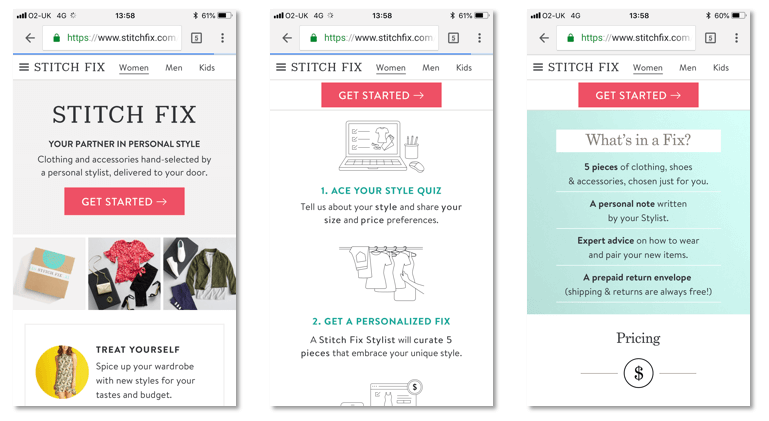
In its filing before going public, the company pointed to its team of over 75 data scientists, many of whom have Ph.D degrees. CEO Katrina Lake explains that improving experience is at the heart of her growth plans:
“The engines we’re focused on are improving and innovating on the client experience: how to be deeply personalized, how to use data science to get clients more of what they want. The second engine is new launches; we launched plus sizes, men’s and premium, and we’re excited to see those grow.”
The first step in this process happens as soon as the customer creates their Stitch Fix account. Customers who set up an account, either through their email or by connecting to Facebook, are led through an extensive questionnaire called the Style Quiz which is an example of a conversational UI.

3. Search marketing trends
Since Google dominates the results that businesses get from search engine marketing our summary of the search trends here focuses on Google. Carolanne Mangles reported for us back in August on some of the biggest changes Google made in 2018, many of which will be deployed and evolve in 2019. The most obvious change is the launch of the Google Marketing Platform which saw AdWords renamed to Ads and the Doubleclick ad platform and analysis tools like Google Analytics, Data Studio, and AB testing through data studio more tightly integrated.

For organic search the update to keep an eye on in 2019 is Google’s Speed Update which penalizes slower sites and was released after months of trials. While this will initially only affect the slowest sites, from past experience, we can expect Google will change the weighting on the algorithm to affect more sites that don’t improve their speed within time.
Another ongoing organic change to track in 2019 is the evolution of Google’s search snippets which I track adoption of via the Mozcast SERPs features analysis:

This shows the importance of the features integrated into the organic SERPS of which related questions are currently at an all-time high with images and featured snippets remaining important. The prominence of these features shows the importance of understanding and answering the questions your audience ask as a more conversational search develops via smartphone and voice-activated smart speakers. The chart also shows the near complete switchover to secure https amongst leading sites the Mozcast monitors in its review of SERPS for 10,000 commonly used keywords.
The government-commissioned annual Communications Market Review is one of the best sources for compiling data on Internet and Social Media usage.
The latest report, published last month has a good visualization summarising the most recent changes in age-related usage of social networks use of the main social networks between 2016 to 2018:
The visualization gives a great summary of the changes in three of the main consumer network:
- Facebook – Static or declining in most age groups except the older (55+ age group) which is now the biggest group of users
- Instagram – Increase in usage across all age groups with the largest, the 25 to 34 age group followed by 18 to 24
- Snapchat – The largest increase and biggest user group is again the 25 to 34 age group showing that Snapchat isn’t just for teens. Indeed, there are also increases in users in older age groups which are not far behind the younger age groups in adoption levels. However, the frequency of use isn’t considered in this compilation.
We can expect that Instagram ad spend continues to increase in line with increased usage and better advertising options on the platform. This shift in ad spend is indicated by a Merkle report of their clients’ investments that showed that while Facebook ad spend grew 40 percent year over year in Q2 2018, ad spend on Instagram jumped 177 percent during the same time period.
Within Facebook, increased use of Messenger is an opportunity. The latest statistics from Facebook show the importance of Messenger: with 1.3 billion people use Messenger every month; 8 billion messages exchanged between people and businesses every month and 78% of people with smartphones using messaging every month. As well as targeted sponsored ads, use of Messenger for conversations is a major trend. Nike has one of the most advanced commercial chat applications and well used implementations I have seen that is worth checking out.
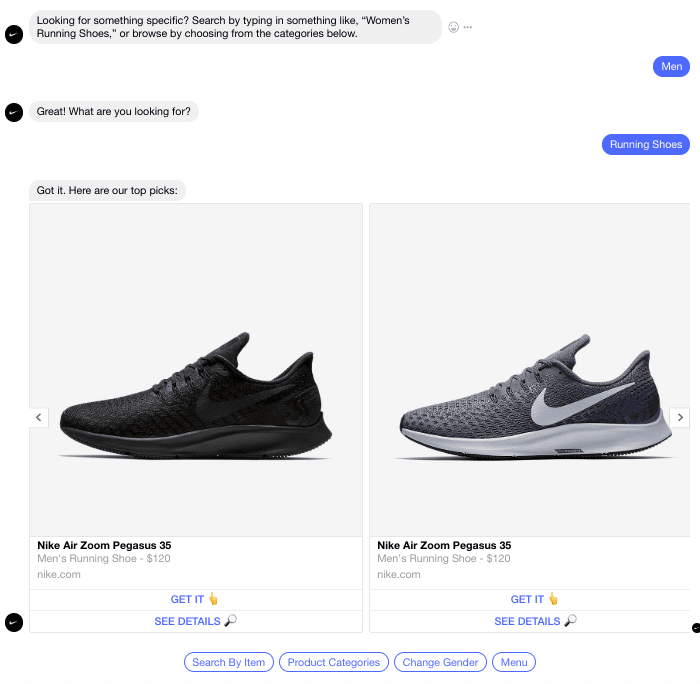
What about B2B social media?
LinkedIn and Twitter are not shown in the OfCom compilation data. For B2B marketers, LinkedIn is likely to grow in importance, although the 2016 acquisition by Microsoft makes it harder to determine how platform revenue is split up between advertising and recruitment. The most recent Q2 2018 trading report suggest the growing importance of the platform with LinkedIn revenue increasing 37% (up 34% in constant currency) with LinkedIn sessions growth of 41% and users of 562 million users in more than 200 countries and territories worldwide.
Although Twitter’s future is often painted negatively, it will still be a significant for engaging across relevant B2B and B2C audiences. The latest Q2 2018 reports show daily active user growth of 11% and a revenue increase of 24% YoY.
5. Email marketing and marketing automation
Of all the channels we cover in this article, finding new innovation in email marketing techniques is the most challenging. Most email marketing techniques are well established and most recent trends related to improving relevance and interactivity on smartphone. This recent report benchmarking email experiences of retail and travel brands gives a good summary of the state of the art.
In terms of techniques, Striata has a great summary of Email trends, which is how I see innovation in email marketing – it’s all about integrating email with content marketing at the right time in customer journey across omnichannel touchpoints

6. Analytics and reporting
We’ve been banging the ‘Actionable Analytics’ drum for nearly 10 years now since we believe in the power of data-driven marketing based on digital analytics and customer research. It’s why we’re called Smart Insights!
Systems such as Google Analytics and Adobe Analytics are relatively static in terms of reports and functionality. For me, the main trend here is using softer measures to get customer feedback. For example, I’ve been taking a look at some really interesting case studies from Vision Critical (Disclosure: A Content Marketing Partner of Smart Insights) which show how savvy brands are using customer communities to feed back.
Another trend here is the adoption of dashboard reporting and analysis systems. At Smart Insights, we have adopted Google’s Data Studio (since it came out of Beta) for our monthly and weekly trading reports alongside the Google Sheets Add-In for the Google Analytics API, which we use for pulling the data through for our RACE digital marketing dashboard.
Data Studio can create more granular visualization like this CrUX dashboard. This type of analysis was never really possible in Google Analytics.
In this discussion of Content auditing we show another example of content engagement (outliers omitted).
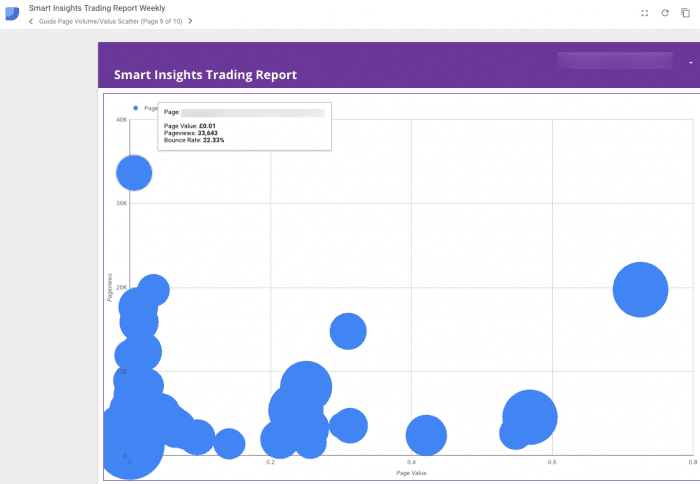
Systems to gather unstructured feedback from customers are also increasing in popularity with larger brands. This case study from Vision Critical gives an example of how How Prudential Singapore accelerates product growth with customer insights. The company launched the PRU for You (PFY) community in July 2016 to allow greater engagement with customers and to give them a voice in developing new products and services. PFY has 4,500 members: 88% are customers and 12% are agents.
I like this example, since it translated into product improvements, not only improvements to the experience. In May 2017, PACS launched two products resulting from PFY feedback—PRUman and PRUlady, covering illnesses specific to men and women. Customers diagnosed can receive up to a S$100,000 payout, ensuring they get the treatment they need without financial concerns. PFY was instrumental in structuring these products by identifying customer interest in eliminating “nice to have” benefits, leading to more affordable prices for everyone. Community feedback also showed that simplified health questionnaires made it easier for customers to purchase the products.
7. Content marketing
The Content Marketing Institute does a great job of showing trends within content marketing via its research and case studies. This case study covering
How Cisco Merges Martech With Creative Content, summarizes their process for creating content to integrate with activities.

The research section on CMI shows similar patterns within content marketing compared to previous years. Taking technology content marketing as an example, this chart shows that key trends are:
- A more strategic approach to content marketing with many businesses now having a holistic content marketing strategy to support audience engagement and commercial goals of leads and sales
- Focus on content quality based around deeper understanding of personas
- New roles and structure to support content marketing activities as investment increases
- Improved measurement of content marketing effectiveness

To complete the picture of digital channels, we need to review advertising and PR. We finish here, since although digital media are hugely important to demand generation and branding, discerning trends on cross-industry data is difficult in this sector where there is a reporting lag, which means that reports for ad types aren’t published until the next quarter. The most recent at the time of writing is this breakdown from the IAB.
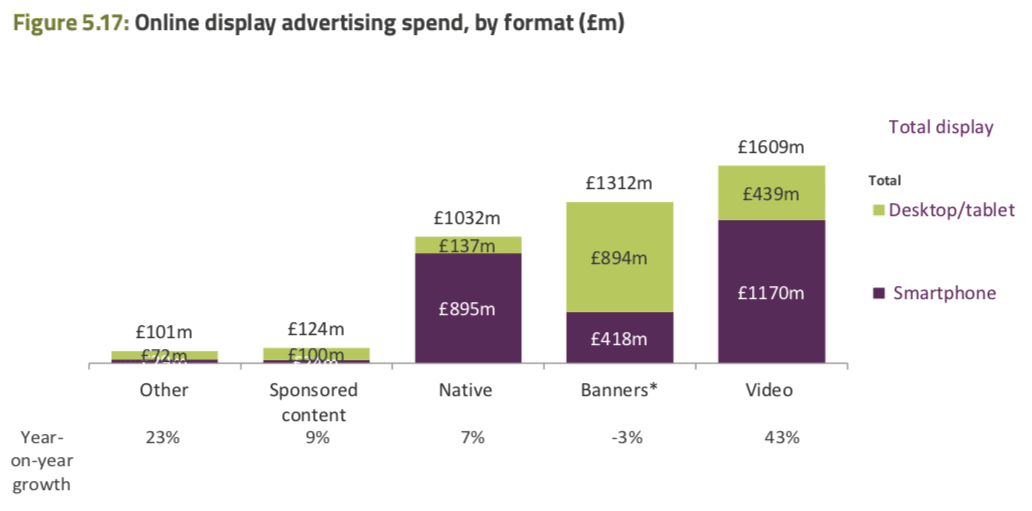
The big winners are native advertising and video advertising which we can expect to continue to be important into 2019 after video advertising overtook display for the first time.
It all adds up to digital transformation
I hope you find these examples of the latest trends inspiring. As we’ve seen, the changes needed to compete by deploying digital media, technology and data mean that many businesses are planning a transformation programme, or have one in place.
If you’re planning a transformation programme, see our toolkits for Business members: Managing a Digital Transformation programme and structuring a digital organization including creating a Digital Marketing Centre of Excellence.


